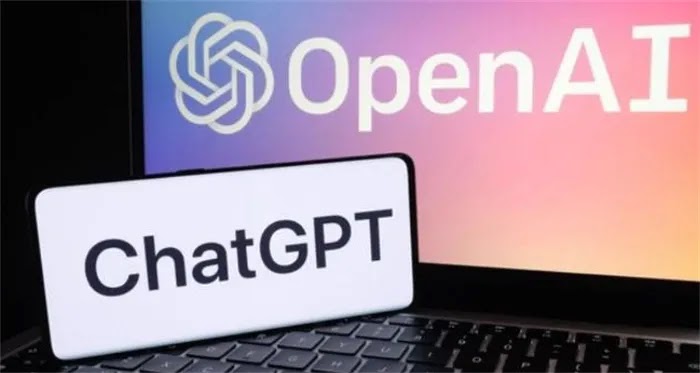How to Use Chat GPT: Unleashing the Power of Conversational AI
How to Use Chat GPT?
In recent years, the field of artificial intelligence has witnessed significant advancements in natural language processing and machine learning. One of the most exciting applications of these technologies is conversational AI. Conversational AI allows machines to engage in human-like conversations, opening up a world of possibilities for virtual assistants, customer support agents, and chatbots. Among the various conversational AI models available, Chat GPT stands out as a powerful tool that can be employed to build interactive and engaging chat-based applications. In this article, we will explore how to use Chat GPT effectively and unleash its power.
 |
| How to Use Chat GPT: Unleashing the Power of Conversational AI |
What is Chat GPT?
Chat GPT is an extension of the well-known GPT (Generative Pre-trained Transformer) model, developed by OpenAI. GPT models are based on transformer architectures and have achieved remarkable success in various natural language processing tasks, including language translation, text completion, and sentiment analysis. Chat GPT takes this a step further by enabling conversations with users in a dynamic and interactive manner.
Using Chat GPT for Conversational AI
1. Data Collection and Preprocessing: The first step in using Chat GPT is to collect and preprocess the training data. The quality and diversity of the training data play a crucial role in the performance of the model. It is important to gather conversational data that covers a wide range of topics and includes different conversational styles. Preprocessing involves cleaning the data, removing noise, and formatting it in a way that the model can understand.
2. Fine-tuning the Model: Once the training data is prepared, the next step is to fine-tune the base GPT model for chat applications. Fine-tuning involves training the model on the collected conversational data, allowing it to learn the patterns and dynamics of human conversations. OpenAI provides guidelines and resources for fine-tuning GPT models, including Chat GPT.
3. Designing the User Interface: To make the best use of Chat GPT, it is essential to design an intuitive and user-friendly interface for users to interact with the model. The interface should provide clear instructions and prompts to guide the conversation. It should also handle user inputs effectively and present model responses in a coherent and understandable manner.
4. Setting Conversation Context: Chat GPT performs best when it has context about the ongoing conversation. It is a good practice to maintain a history of previous user inputs and model responses to provide a sense of continuity. This context helps the model understand the user's intent and generate more relevant and coherent responses.
5. Handling User Queries: Chat GPT can handle a wide range of user queries and provide responses based on its training. However, it is important to handle out-of-scope queries gracefully. When the model encounters a query it hasn't been trained on or doesn't have enough information about, it should be programmed to provide a polite and informative response, such as suggesting alternative topics or redirecting the user to appropriate resources.
6. Continuous Iteration and Improvement: Building a chat-based AI system is an iterative process. It is essential to monitor the model's performance, collect feedback from users, and continuously update and improve the system. This involves retraining the model with new data, fine-tuning its parameters, and addressing any limitations or issues that arise during real-world usage.
Benefits and Challenges of Chat GPT
Chat GPT offers several benefits when used effectively. It enables businesses to provide 24/7 customer support, personalized interactions, and improved user experiences. It can handle a large volume of queries simultaneously, reducing the need for human intervention and saving time and resources. Chat GPT also has the potential to learn and adapt to user preferences over time, enhancing the conversational experience.
However, there are certain challenges associated with using Chat GPT. One significant challenge is the generation of biased or inappropriate responses. Since the model learns from training data, any biases present in the data can be reflected in its outputs. Careful data curation and ongoing monitoring are necessary to mitigate this issue. Additionally, Chat GPT may sometimes generate plausible-sounding but incorrect or misleading responses. It is crucial to validate and fact-check the information provided by the model to ensure accuracy.
Ethical considerations are also important when deploying Chat GPT. It is essential to inform users that they are interacting with an AI model and set clear expectations about its capabilities. User privacy and data security should be prioritized, and any personal or sensitive information shared during the conversation should be handled responsibly.
Future Directions and Improvements
As technology continues to advance, there are several areas where Chat GPT and conversational AI can be further improved. Some of the key areas of development include:
1. Enhanced Context Understanding: Improving the model's ability to understand and maintain context throughout a conversation can lead to more coherent and relevant responses. This involves capturing long-term dependencies and effectively utilizing the conversation history.
2. Explainability and Transparency: Making AI models more transparent and explainable is crucial for building trust with users. Efforts are underway to develop methods that can provide insights into the model's decision-making process and allow users to understand how and why a particular response was generated.
3. Multi-modal Capabilities: Integrating chat-based AI with other modalities like images, videos, and voice can enhance the user experience and enable more interactive and dynamic conversations. This opens up possibilities for applications in areas such as virtual assistants, social media, and e-commerce.
4. Domain-Specific Adaptation: Fine-tuning Chat GPT for specific domains or industries can improve its performance and make it more suitable for specialized applications. This involves training the model on domain-specific data and incorporating domain-specific knowledge.
Furthermore, the widespread adoption of Chat GPT has the potential to revolutionize various industries.
Let's Explore Some Specific Applications And Use Cases:
1. Customer Support: Chat GPT can be deployed as a virtual customer support agent, providing instant and personalized assistance to users. It can handle common queries, provide troubleshooting guidance, and offer product recommendations based on user preferences and historical data. This not only improves customer satisfaction but also reduces the burden on human support agents.
2. Virtual Assistants: Chat GPT can serve as the foundation for intelligent virtual assistants that help users with daily tasks, scheduling, reminders, and information retrieval. By understanding natural language commands and context, virtual assistants powered by Chat GPT can engage in dynamic conversations and provide relevant and timely responses.
3. E-commerce and Recommendations: Chat GPT can be integrated into e-commerce platforms to assist customers in product selection, answer product-related queries, and offer personalized recommendations. By understanding user preferences and utilizing historical data, Chat GPT can enhance the shopping experience and increase customer engagement and conversion rates.
4. Language Learning and Tutoring: Chat GPT can be utilized as a language learning tool, providing interactive conversational practice for learners. It can engage in dialogues, correct grammar and vocabulary, and simulate real-world conversations to help learners improve their language skills. Additionally, Chat GPT can act as a virtual tutor, offering explanations and examples for various subjects.
5. Content Generation and Writing Assistance: Chat GPT can assist content creators, writers, and journalists by providing creative suggestions, generating ideas, or helping with writer's block. It can also offer grammar and style corrections, enhancing the quality of written content. This can be particularly useful in journalism, content marketing, and creative writing.
6. Social Media Engagement: Chat GPT can be integrated into social media platforms, allowing users to have interactive conversations with virtual personas or chatbots. This can enhance user engagement, provide personalized recommendations, and offer real-time assistance, creating a more interactive and dynamic social media experience.
As the field of conversational AI continues to evolve, there are ongoing efforts to address the limitations and challenges associated with Chat GPT.
Here Are Some Areas Of Further Research And Improvement:
1. Bias Mitigation: Bias in AI models is a critical concern. Researchers and developers are actively working on techniques to reduce bias in Chat GPT. This includes developing methods to detect and mitigate biased responses, incorporating diverse training data, and implementing fairness guidelines during the fine-tuning process.
2. User Control and Customization: Providing users with more control over the behavior and responses of Chat GPT is essential. Allowing users to customize the personality, tone, and style of the model can create a more personalized and tailored conversational experience. OpenAI has explored techniques like "instructing" the model through examples and demonstrating desired behavior to give users more influence over the output.
3. Explainability and Trust: Enhancing the explainability of Chat GPT's responses can increase user trust and confidence in the system. Researchers are investigating methods to provide explanations or reasoning behind the model's generated outputs. This could involve highlighting the relevant parts of the input text or providing context for the model's decision-making process.
4. Safety and Control Measures: Implementing safety measures is crucial to prevent misuse or malicious behavior of AI chat systems. OpenAI, for example, has deployed a Moderation API to warn or block certain types of unsafe content. Striking a balance between user freedom and preventing harmful or inappropriate outputs is an ongoing challenge that requires continuous improvement and community input.
5. Multilingual and Multicultural Support: Expanding Chat GPT's capabilities to support a wider range of languages and cultural contexts is a significant area of development. By training the model on diverse multilingual datasets and incorporating cross-cultural knowledge, Chat GPT can become more inclusive and effective in catering to diverse user populations.
6. Collaboration and Cooperation: The development of Chat GPT and other conversational AI models benefits greatly from collaboration and cooperation within the research and developer communities. Sharing best practices, datasets, and insights can accelerate progress, foster responsible AI development, and ensure the ethical use of chat-based AI systems.
Conclusion:
Chat GPT is a powerful tool for building conversational AI applications. By leveraging the capabilities of GPT models and fine-tuning them for chat-based interactions, businesses and developers can create intelligent and engaging chatbots, virtual assistants, and customer support systems. While there are challenges and ethical considerations to address, continuous improvement and responsible deployment can unlock the immense potential of Chat GPT, revolutionizing the way we interact with machines and enhancing user experiences in the digital realm.
In conclusion, Chat GPT represents a remarkable advancement in conversational AI, enabling interactive and engaging chat-based applications. By addressing challenges related to bias, user control, explainability, safety, multilingual support, and collaboration, we can further improve the capabilities and responsible deployment of Chat GPT. As research and development in this field continue to evolve, we can look forward to even more sophisticated and user-centric conversational AI systems that enhance our digital experiences and interactions.




